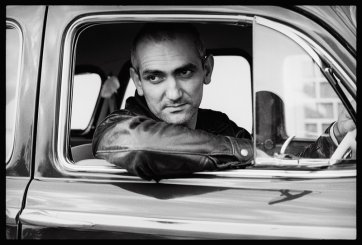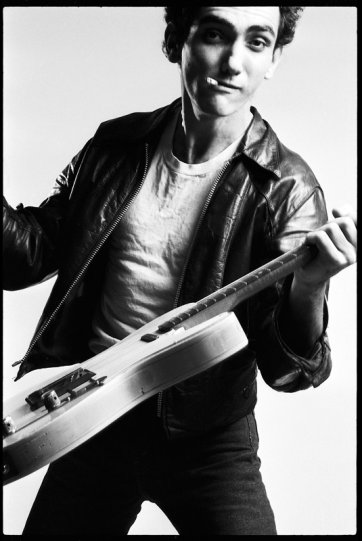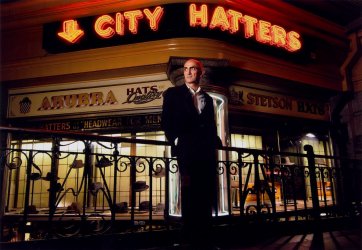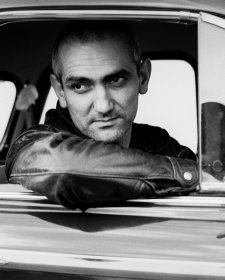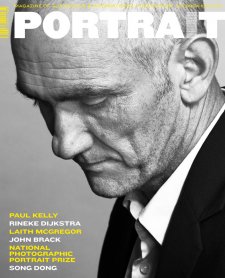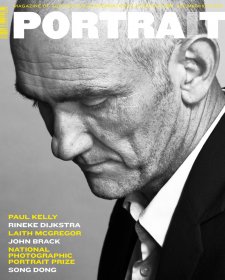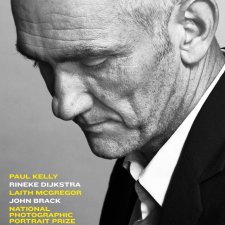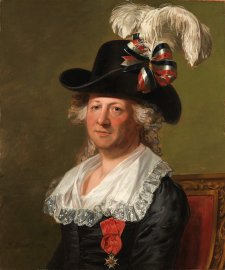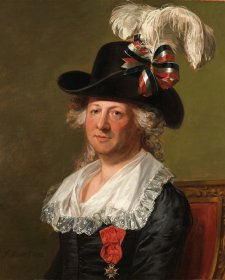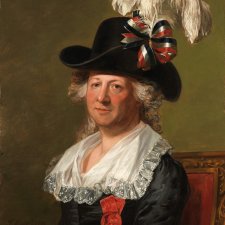We all know that Art is not truth. Art is a lie that makes us realise truth at least the truth that is given us to understand. The artist must know the manner whereby to convince others of the truthfulness of his lies.
Pablo Picasso
For someone who has been called the Australian ‘people’s poet’, recognised by many of his peers as a major singersongwriter, a balladeer whose songs are acknowledged hymns to the Australian psyche, Paul Kelly is notoriously shy. A man of few words, his long silences and even shorter responses are legendary amongst interviewers. Given to keen observation with a highly attuned ear for nuances, turns of phrase, muscular vernacular and the poetic tradition of the Western canon, he is quick to point out that his huge oeuvre is not autobiographical. Rather, it is a portrait of a generation that came of age during the golden years of Australian bands, pub rock and punk from the late 1970s, 80s and 90s. Portraiture, like Kelly’s poetic performance idiom is, to borrow Picasso’s adage, ‘a lie that tells the truth’; representations honed to promote a public persona or coaxed to reveal elusive, sometimes private and unobserved, aspects of that same character. The exhibition Paul Kelly & The Portraits comprises photographs, painted portraits and a recently released biographical film that traverse Kelly’s career: from his early days as a young indie-pop musician, part of the late 70s Carlton pub-band circuit with his bands the High Rise Bombers and later The Dots, to his move to Sydney in the mid-1980s and the beginning of his critical success, to the first decade of this new century. The release of his autobiographical ‘mongrel memoir’ in 2010, How to make gravy, based around musings on his performance of 100 songs with titles from A to Z and, the new biographical film Paul Kelly: Stories of Me, breathe new life into our understanding of this omnivorous ‘raider’ of a panoply of literary, social history and musical genres.
For many of the artists in this exhibition, Kelly is emblematic of their generation. They were literally creating their careers out of a passion for photography or painting within the burgeoning underground music scene. Several have established national and international reputations. Following a four year stint as the European photographer for the Fairfax media group, Greg Noakes moved to Melbourne in the late 1970s where he worked within the Australian music industry doing promotional photography for what would become major Australian bands and shooting stills for the ABC’s Countdown program. Liz Reed’s induction into Melbourne’s music photography began with Billy Thorpe and the Aztecs in 1968 and grew from there. Tony Mott came to Australia as a chef, taking photographs of then unknown rock bands at various inner city pub venues in Sydney as a hobby. The hobby quickly overtook the official career, and the rest, as they say is history. Painter Jon Campbell also played in bands and knew Kelly through Melbourne’s inner-city music scene. He recounted Kelly agreeing to sit for a portrait while they were waiting in the beer queue at a Neil Young concert. In 1986, Bleddyn Butcher was sent out by major British publication New Musical Express to interview David McComb of the Perth based band, The Triffids, with further instructions from the editor ‘to photograph any emerging Australian artists I might encounter along the way’. Butcher’s shot is taken at Kelly’s house in Darlinghurst. From Kelly’s open expression, there was clearly a friendly conversation taking place between photographer and artist, although the singer’s reserve was noted: ‘Paul was shy. Just catching his eye was a challenge. When I managed it, I counted myself a success ... Somehow Paul and I became friends.’
In London Butcher had been aware of the critically acclaimed solo album, POST, released in 1985 that Kelly had self-funded. At the time the photograph was taken (May 1986) Kelly and his allmale band, The Coloured Girls would have been recording, or about to record, their double album Gossip (released in August 1986).
Many of the works in the exhibition were commissioned to accompany interviews in magazines or used for posters, album covers or promotional stills for music videos and films. One of the earliest photographic portraits is by Greg Noakes. It captures the bravura of Melbourne’s late 70s grunge pub music scene: stovepipe jeans, black leather jacket, white t-shirt, trademark guitar and fag. Noakes recalled their shared reticence and how the tools of their respective ‘trades’ transformed them: ‘Each time Paul came to the studio … his outer persona had changed slightly though his inner shyness was still apparent, if only eclipsed by my own. With a guitar in his hand and a camera in mine, we were different people.’
In 2007, Peter Brew-Bevan photographed Paul Kelly on commission for a cover story in the Melbourne Magazine. He writes ‘It was the first time that I had met Paul, and I was instantly intrigued by his quirky nature. I found him to be a very quiet man, very introspective, which I liked. He would often zone out from the shoot and into his own world, so, instead of getting frustrated with this I decided to work with him and capture these 'honest' moments. This portrait was 'snapped' during one of his distant moments during the shoot.’ That moment of reverie happened when Kelly opened the piano hood and started to tinkle the keys. Other shots didn’t make the promotional cut. However, as personal favourites of the photographer or artist, they reveal private traits or gestures of the performer when the public masque had slipped. Liz Reed’s early 1980 black and white photograph, an intimate snapshot which captures an impish young guy, was considered not suitable for a poster to promote Paul Kelly and The Dots’ TALK album.
However, this work remains a favourite of the photographer because it recalled her first meeting Kelly in 1977: ‘From my personal view as a photographer, this was one of the best three shots of that evening. I saw the Paul Kelly that I had met on the day he rolled into Melbourne, having relocated himself from Adelaide into the Spare Change household in East Melbourne. Within a week “The High Rise Bombers” was up and running and from that point on Paul Kelly never missed a beat.’
Peter Hudson’s portrait, Words and Music, Portrait of Paul Kelly was a finalist in the 2007 Archibald Prize and captured, in Kelly’s words, ‘his mother’s eyes’. Portrait painters Jon Campbell and Hudson were both musicians. Hudson shared, with Kelly, a link to the Gurindji people and the land rights movement. Kelly co-wrote with Kev Carmody, the anthemic From little things big things grow which became one of the hits of the 2007 Live Earth concerts. Hudson credits his engagement with the Gurindji steered him towards portraiture.
For photographer Stu Spence, the collaborative conversation between sitter and photographer proved to be a turning point in his practice. Spence clearly recalled Kelly ‘working the lens like a man in charge of his destiny’. In response, Spence made a conscious decision to push the contrast in the black and white printing, to create a more dramatic effect.
‘I remember coming out of the darkroom and peering at those first few prints, like they were someone else’s work. Looking at Paul’s face in that iconic Beatles side-light … that ambiguous “kiss or kill” look on his face. I felt I was dipping a toe into the deep water of classic portraiture.’
Wendy McDougall’s 1992 images and Martin Philbey’s more recent photographs portray the musician in his habitat, Melbourne. Sydneysider McDougall recalled being guided by Kelly, ‘I followed Paul’s lead in regard to locations … The legendary Continental Café was a venue Paul played in often and the car happened to be parked nearby’. Kelly had split with his band The Coloured Girls in 1991, going solo, hence these two images herald a new phase in his career. Until its closure in 2001, the Continental was an important venue for Melbourne’s live music scene offering dinner and show packages.
Reflected against the flashing neon sign of the iconic City Hatters in the very heart of the city, where presumably he buys his trademark trilby hats, Philbey has caught Kelly in a kind of Carveresque contemplative mood, as innerurban chronicler drawing on the fragments and snatches of overheard conversations floating above the peak-hour noise at Flinders Street Station. Philbey’s recall of the shoot adds a little ironic tension to the apparent composure of the scene: ‘It was made at peak hour on a Friday night on the corner of the busiest intersection in Melbourne. I had to shoot in between crossing pedestrians and in time with the blinking City Hatters neon sign.’ Kelly was patient; it was his idea.
Although the works in this exhibition focus on Paul Kelly the individual, and range across the spectrum of his more than thirty-five-year musical career, more importantly they canvas that ambiguous shifting ground between the performer’s mask and the elusive flashes of his inner being. The exhibition is a series of acts of doubled recognition where photographers, artists and musician all, taking liberties with Picasso, must find the manner in which to convince us, the viewers, of the truthfulness of their representations.

